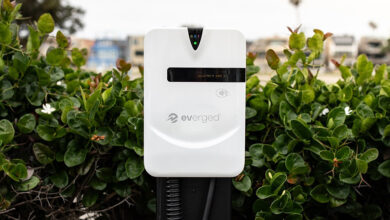Car Shoppers are Watching Their Budgets, But Ready to Buy
Trends report shows support for dealership experience, U.S. manufacturing…

Economic uncertainty and tight inventory levels remain top concerns for car buyers, according to the 2024 Automotive Trends report released by automotive technology company Cars Commerce Inc.
Data shows Gen Z provides a bright spot for retailers, with 80% of young vehicle shoppers moving from online to offline and opting to finish the deal in the showroom.
Meanwhile, American drivers are supporting American workers into the new year, with almost 50% willing to spend more on locally made vehicles.
And, despite the government’s best efforts, consumers are eyeing EVs, but few are committing.
The main questions steering the automotive retail landscape into 2024 are: Who’s buying? What’s available? And the biggie: What’s the price tag?
“Throughout 2023, the global auto industry, domestically and abroad, faced uncertainty, including a history-making OEM labor strike. Consumers are feeling the impact of broad economic and political forces, especially in their wallets,” said Rebecca Lindland, senior director of industry data and insights at Cars Commerce. “As we head into the new year, consumers—regardless of generation or geography—seek affordable solutions to get the vehicle they want with the features they value.”
Cars Commerce predicts five trends will influence the auto industry in 2024 and beyond:
Buyers turn budget-savvy. With affordability top of mind, nearly half of car shoppers plan to spend under $30,000 on their next vehicle purchase. But only about 12% of new cars are priced in that range, as automakers produce higher-margin products. With high interest in this price range and low inventory, new budget-friendly models on Cars.com are selling faster than pricier rides—new vehicles under $30,000 sell an average of 19 days faster than new cars over $30,000.
The used-car crunch is real, but trade-in values are a bright spot. Used-car inventory is sparse and expensive—and likely to stay that way. Why? During the pandemic, manufacturers produced fewer vehicles, creating a deficit of roughly 10.2 million gently used 1- to 3-year-old cars potentially returning to the market in the coming years—prime picks for used buyers. But shoppers looking to leverage a trade-in toward purchasing a new or used vehicle may benefit from this scarcity while also helping to ease the industry’s used-car crunch.
Gen Z is rewriting the car-buying story. Despite Gen Z growing up with the internet, it’s millennials who are most likely to prefer purchasing their car fully online (16%). Comparatively, only 9% of Gen Zers prefer an online purchase—and 80% affirm they want to finish the deal in person. But Gen-Z bucking norms doesn’t stop there—42% bought their first set of wheels between 16 and 18, outpacing 32% of millennials.
The auto industry will have a major manufacturing play in the U.S. The 2024 presidential race is set to turn the spotlight on U.S. auto production. American buyers are tuning in, ready to spend more on cars that boost local employment—nearly half of Americans will pay extra for a vehicle that creates U.S. jobs.
Electrification’s next stop: What’s the road ahead? The spotlight is on EVs and their batteries in the U.S. manufacturing push. The government’s slicing through EV adoption hurdles with tax breaks and infrastructure funds. Over half of Americans see EVs ruling the roads in less than 20 years, and EVs make up 4% of total new-vehicle search share on Cars.com, up 0.06 percentage points YOY. While shoppers are EV-curious, going hybrid may be the next step some shoppers take before going fully electric.



